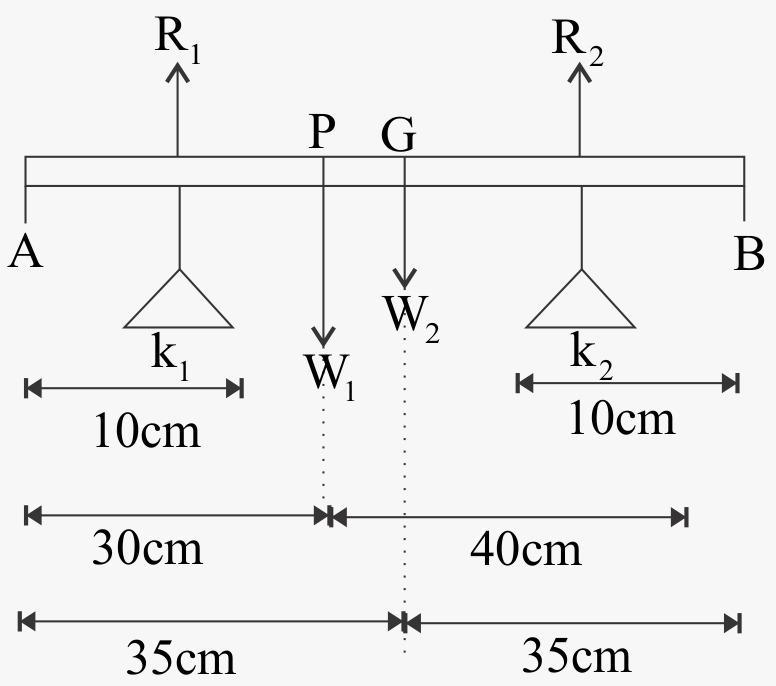Question
Question: A metal bar \(70cm\) long and \(4kg\) in mass is supported on two knife edges placed \(10cm\) from e...
A metal bar 70cm long and 4kg in mass is supported on two knife edges placed 10cm from each end of metal bar. A 6kg weight is suspended at 30cm from one end. Find the reactions at the knife edges due to these weights. Assume linear mass density of metal bars is constant at all points on metal bars.
A) 45N and 43N
B) 50N and 35N
C) 55N and 43N
D) 54N and 30N
Solution
We know every action has an equal and opposite reaction. The reaction at the knife's edges is equal and opposite to the force applied on knife edges by weight of metal bar and suspended weight. When a weight is suspended on rod then the force applied on fixed ends of rod is inversely proportional to the distance of end of rod from the point of suspension of weight.
Complete step by step answer:

As shown in figure AB is metal bar 70cm long and 4kg in mass. There are two knife-edges at points k1 and k2 at a distance of 10cm from the ends of metal bars.
G is the point of centre of gravity of a metal bar and P is the point of centre of mass of weight suspended on a metal bar.
W1 and W2 are weight of metal bar and suspended weight and, R1, R2 are reactions on edges of knives. We know total weight is equal to total reaction, then
W1+W2=R1+R2 or W1+W2−R1−R2=0 -(1)
Rod is in rotational equilibrium means torque due to all forces applied on the metal bar is zero. We check torque on the centre of the rod. k1 and k2 are at a distance of 25cm form centre of the bar, G is at centre and P is at 5cm from centre.
Then, for rotational equilibrium,
R1(k1G)−R2(k2G)−W2(PG)=0 -(2)
Given W1=4gN and W2=6gN, where g is acceleration due to gravity of earth and its value is 9.8N/kg.
Putting these values in equation 1, we get
R1+R2=W1+W2=10×9.8=98N-(3)
Putting values in equation (2), we get
0.25R1−0.25R2−0.05W2=0
R1−R2=5W2=56×9.8=11.76N -(4)
After solving equation (3) and (4), we get
R1=54.88N≃55N and R2=43.12N≃43N
Hence the correct answer is option C.
Note: Here we know the metal bar is in stable equilibrium then it is in rotational as well as translational equilibrium. Weight of an object is a product of mass of the object and its acceleration. All the questions with similar conditions as the above question are solved by balancing forces and torque on the metal bar or rod.
